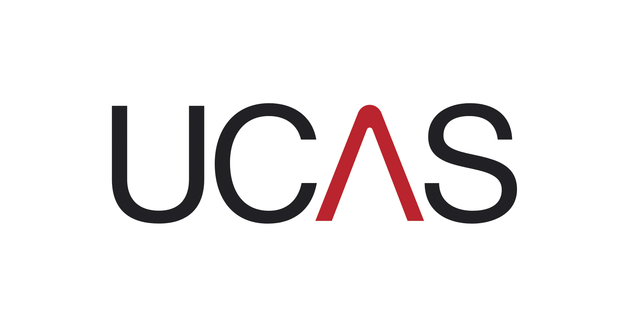9 Steps To The Successful British University Application
November 11, 2017
EasyUni Staff
 (Source:http://sixthformstjames.files.wordpress.com/2010/09/ucas_logo_rgb300.png)
(Source:http://sixthformstjames.files.wordpress.com/2010/09/ucas_logo_rgb300.png)
1. Register to UCAS
The first step is obviously to register on UCAS so that you can start your application. This process takes approximately 15 minutes and you will be required to enter your personal details, like your name, date of birth, address, email id, etc.
Once you complete the registration process, you can start applying to the courses you want.
2. Find the course(s) you are interested in applying for.
Whether you have known your dream career (and courses) since you were a toddler or are still figuring out what you want to do in life, you need to short list courses to take. If you are still searching, or are unsure of which courses will take you to your dreams, you can searching a course by name (e.g. business and management) on the UCAS website. This will also help you find universities that offer that course. Alternatively, if there is a particular university you want to apply to, you can go directly to that university’s website and find courses that suit your preferences.
Decide the 5 courses you want to apply for. UCAS allows you to apply to only 5 courses, they can all be from the same university or from multiple universities.
3. Check the requirements.
Once you have found the courses you are interested in, make a list of those courses and their entry requirements. Each university will have the grade and subject requirements for A-Levels, the International Baccalaureate Diploma (IBDP) on the course description page. For other qualifications you will have to check their international admissions page on the university's website or contact the university directly.
This step is very important as some universities do not accept certain qualifications. For example, University of Warwick does not accept the UEC, College Foundation programmes or the Malaysian Matriculation. If your qualification is not accepted, you may want to consider applying for a foundation year in that university (not all universities offer this option), or sit for another qualifying exam. Another thing to note is that some qualifications may exempt you from the English language test.
UCAS also has a tariff table conversion page where you can convert your qualification grades into UCAS tariff points to compare with the average tariff entry score the university has to get a better idea of your chances of success.

(Source:http://www.icos2014.com/wp-content/uploads/2013/01/main_building_042.jpg)
4. Know your deadlines.
UCAS applications open from mid-September. It is a waste of your energy and time if you put all the possible effort into your only to find out that you've missed the deadlines for your courses. On the same list as your courses and requirements, also write down the important dates.
In 2014, applications to Oxbridge (Oxford and Cambridge) and for Medical/Dentistry courses had the deadline of October 15, 18:00 UK time. For most other courses, the deadline is on January 15, 18:00 UK time. Some art and design courses may have a later deadline of March 24 18:00 UK time. However, it is advisable that you apply as early as possible. The closer you are to the deadline, the more likely it is that the university will be bombarded with applications and take more time to get to yours.
You should receive offers by 31st March.
5. Prepare all necessary documents.
Universities in the UK require most of the same documents as other universities abroad. You will need recommendation letters from your teachers, a personal statement or essay where you convince the admissions officer that they should select you, your matriculation results, and a test of English language.
6. Talk to your school.
You will need to link your counsellor to your application (as a step in the registration process) if you are still enrolled in school and don’t have your matriculation results by the application deadline (Jan 15). They will then have to submit your predicted grades (if you are doing the IB or A-levels), or your current transcripts as well as the names of your academic referees (teachers who will write your recommendation letters).

(Source:http://assets.nerdwallet.com/blog/nerdscholar/files/2014/04/Asking-for-rec-750x420.jpg)
7. Talk to your teachers.
You will have to decide which teacher(s) you want to ask to write you a reference. Once you do that, talk to them and explain which courses you are applying to (and at which universities). Talk to them about why this is important to you, give them more information on which extracurricular activities you are involved in and what your passions and dreams are.
It is crucial that you choose teachers who know you at a personal level and know your strengths and skills. Don't pick teachers who have only known you for a month or two, or worse, teachers whom you know don't like you or are unhappy with your academic performance. These teachers will be writing reference letters to tell the university that you are an amazing candidate for them. So, make sure that you make the best impression on your teachers from the start.
8. Prepare your personal statement.
You will need to write a 4000-character personal statement. This statement is to show the university who you are, why you are interested in this course, and so on. Each university has a section explaining what they are looking for in prospective students. Be sure to read their guidelines and suggestions. Your personal statement is where you can sell yourself to the admissions officer. This is the only chance for the university to see you as an individual.
Do note that you may only write one personal statement per application. This means that if the 5 courses you are applying for include 3 business and management courses and 1 psychology course and 1 computer science course, you will only have the chance to write one personal statement, explaining to the university why you have chosen any of the above courses and why they should make you an offer.
You can upload your personal statement onto UCAS. It is recommend that you do not type your personal statement directly on UCAS but rather write it out and complete it elsewhere. (TIP: Do not copy and paste your personal statement from Word. Often word may add additional characters or spaces that will reduce the number of characters you can have. This is especially important if you are near the character limit. We recommend copying it into Notepad (Windows) or TextEdit (Mac) first and editing it for formatting and errors.)
9. Proofread and submit.
The last, and crucial step to your application is to submit it. All your work so far would be in vain if you don't actually pay the application fee and submit your application. Before you submit your application, however, make sure you double check that you have completed each part and it is the best possible version you can make it. After all, the admissions officers will be judging you based on you
What Offers Can I Get?
You should receive offers by 31st March. You will receive one of the three types of offers below:
Unconditional Offer: This offer means that you have gotten a guaranteed place in the university. Generally this type of offer is only given to students whose final results have already come out.
Conditional Offer: This offer means that you have gotten a place in the university provided you meet certain grade requirements when you finish your matriculation. Once your results are released and you have met these requirements, your offer will change to unconditional.
Unsuccessful: This offer means that the university has decided to not offer you a place for that course. This may be either because you didn't meet their requirements, or that there were more qualified students, or students who were a better fit to that particular university or course.

(Source:http://i.dailymail.co.uk/i/pix/2013/09/10/article-0-02A807A2000005DC-228_638x395.jpg)
What Do You Do After You Receive Your Offers?
After you receive your offers you must choose one course as your firm choice and one as your insurance choice. If you meet all your offer requirements and receive an unconditional offer to your firm choice university, that will be the university you go to. If you, however, miss the grade requirement or your offer is changed from conditional to unsuccessful for your firm choice, your insurance choice will become your firm choice (that is if you met their requirements and got an unconditional offer).
What Can I Do If I Didn't Get Into My First Choice (Or Any Of My Choices)?
There are still options available if you didn't get into any of your choices. Clearing and adjustment are just two of your options.
Clearing is applicable to you when you haven't received any offers from university. Universities will make a list of course that are available for clearing either because they didn't select enough students or because more students rejected their offers than expected. This second round of vacancies is applicable to you if your status says "You are in Clearing" or "Clearing has started". Clearing generally takes place in August or September as the universities finalize which spots are available and which courses have vacancies.
Adjustment is for you if you have received a score higher than you expected or was predicted for you. A list of courses available for each university will be made available on the university's website. If you meet and exceed the requirements of your conditional offers, you could possibly swap where you will be studying. You will only have five 24-hour periods from when your conditional offer changes to an unconditional firm. Once you see that change, you can contact other universities (or the same university for another course) and see which vacancies they have and if you are accepted into any of them. While you do this, your original firm choice will remain safe in case you decide to not swap your course.
For both clearing and adjustment you will have to call up the university and ask them if there are places in the course available. An offer will be made to you verbally. They will note down your id and add you to the course on UCAS. However, not all universities participate in clearing and/or adjustment and not all courses will be available for these options.
Kickstart your education in Malaysia
We'll help you find and apply for your dream university
You might be interested in...
- Top 10 Happiest Six-Figure Jobs in 2025 (That People Actually Enjoy)
- From a Childhood Dream to a Lifelong Vocation: Study Doctor of Medicine at UCSI
- Why Master's Degree Students are Encouraged to Continue Their PhD?
- Top Countries With the Most International Students
- Arab Region's Best: QS University Rankings 2016 for the Middle East
- Brazil Tops QS University Rankings for Latin America
- Updated: Malaysian universities continue to make progress in THE World University Rankings 2023
- EdUHK – Nurturing Future Educators
- Admissions Guide: Top 30 MBA Programs In USA
- How Much Does A Top MBA Degree Cost?





 +60173309581
+60173309581